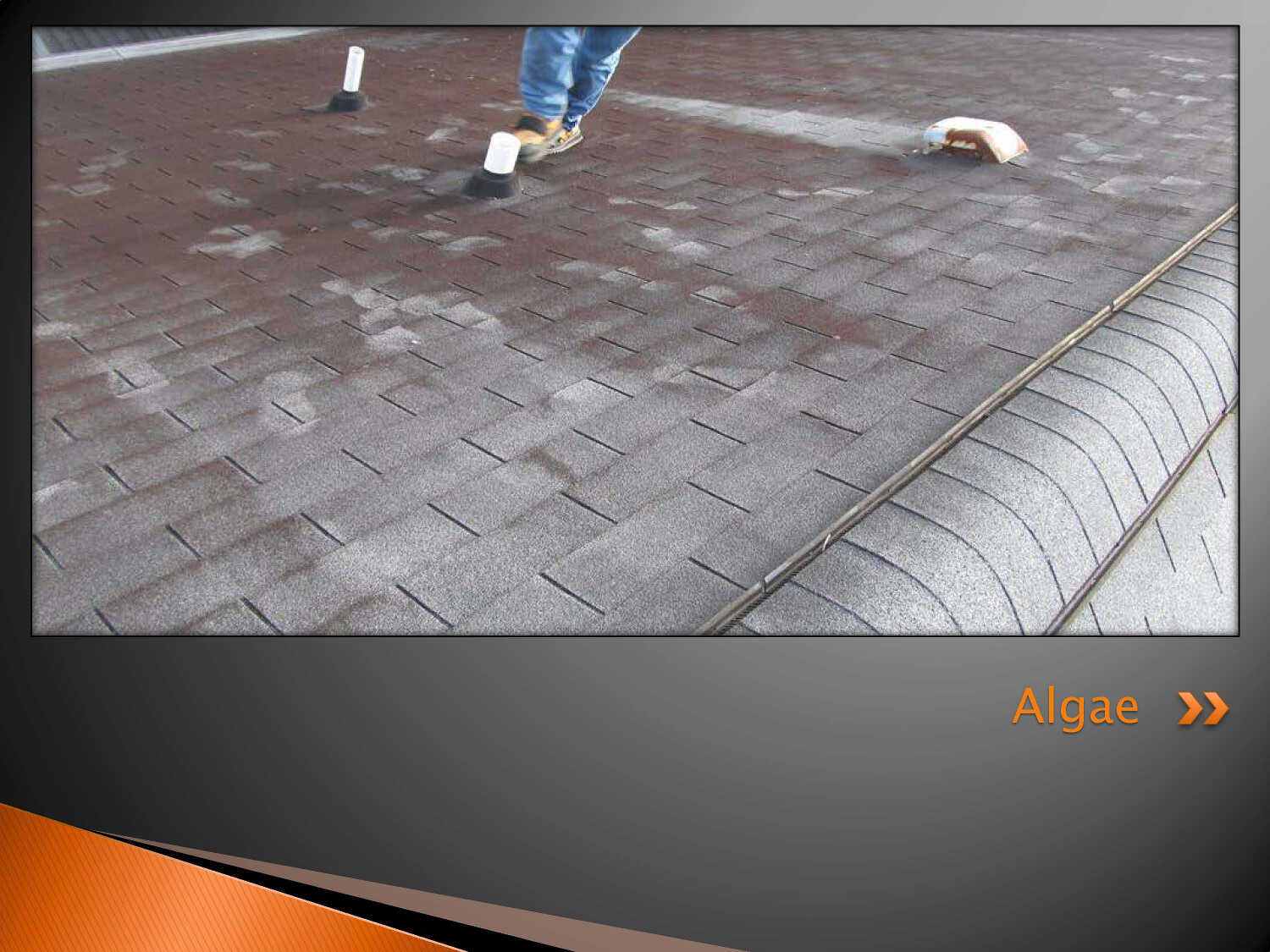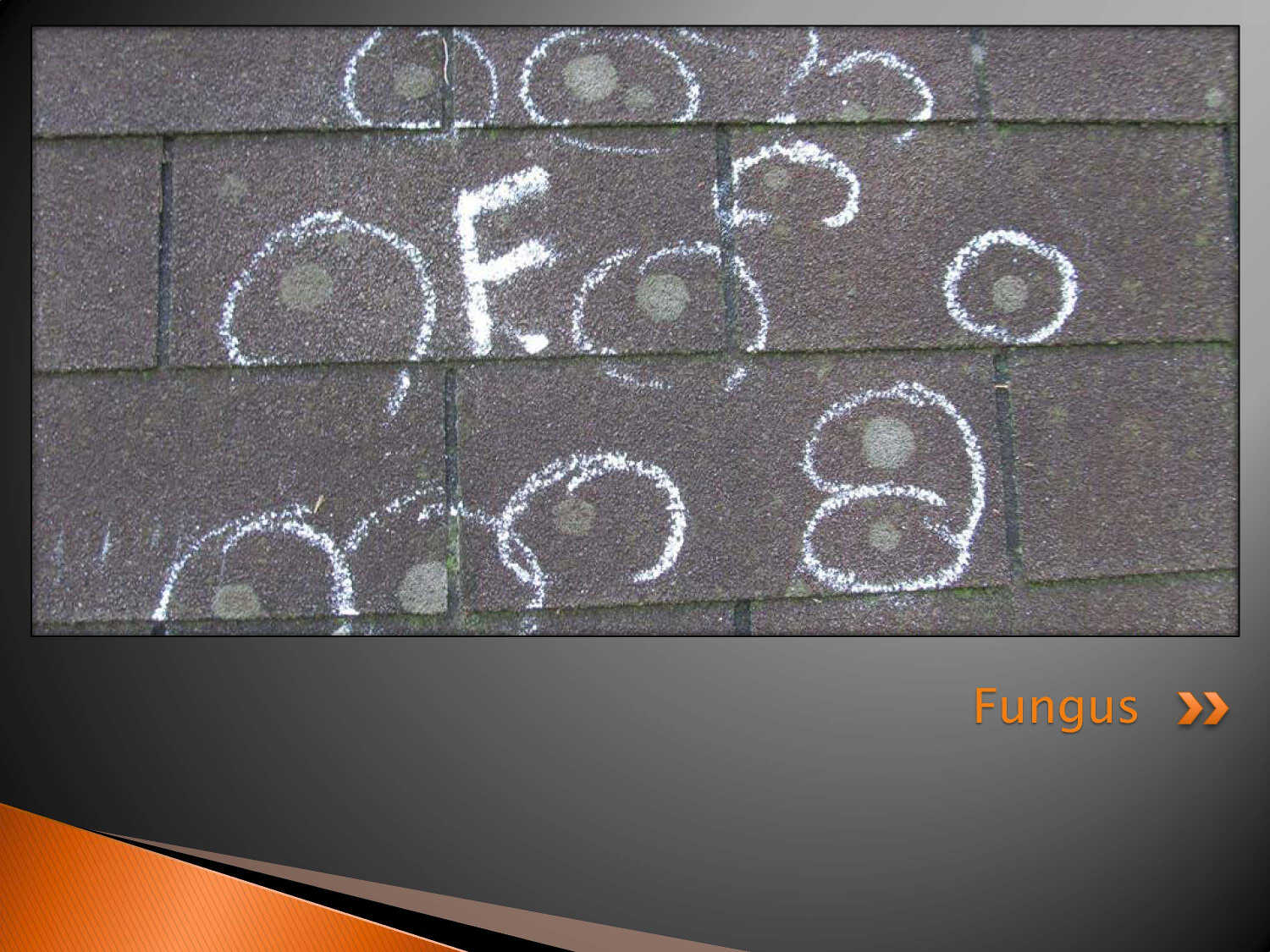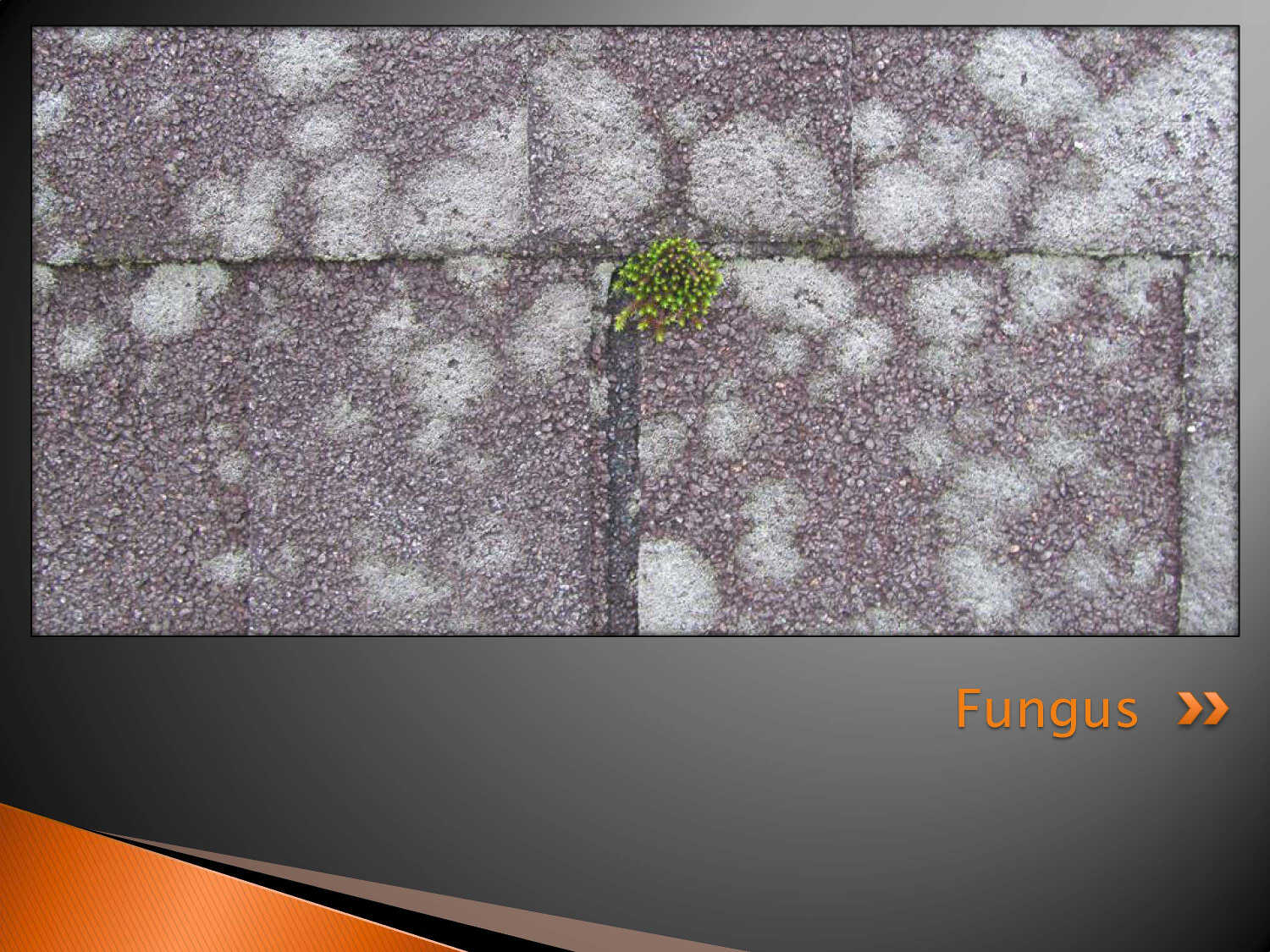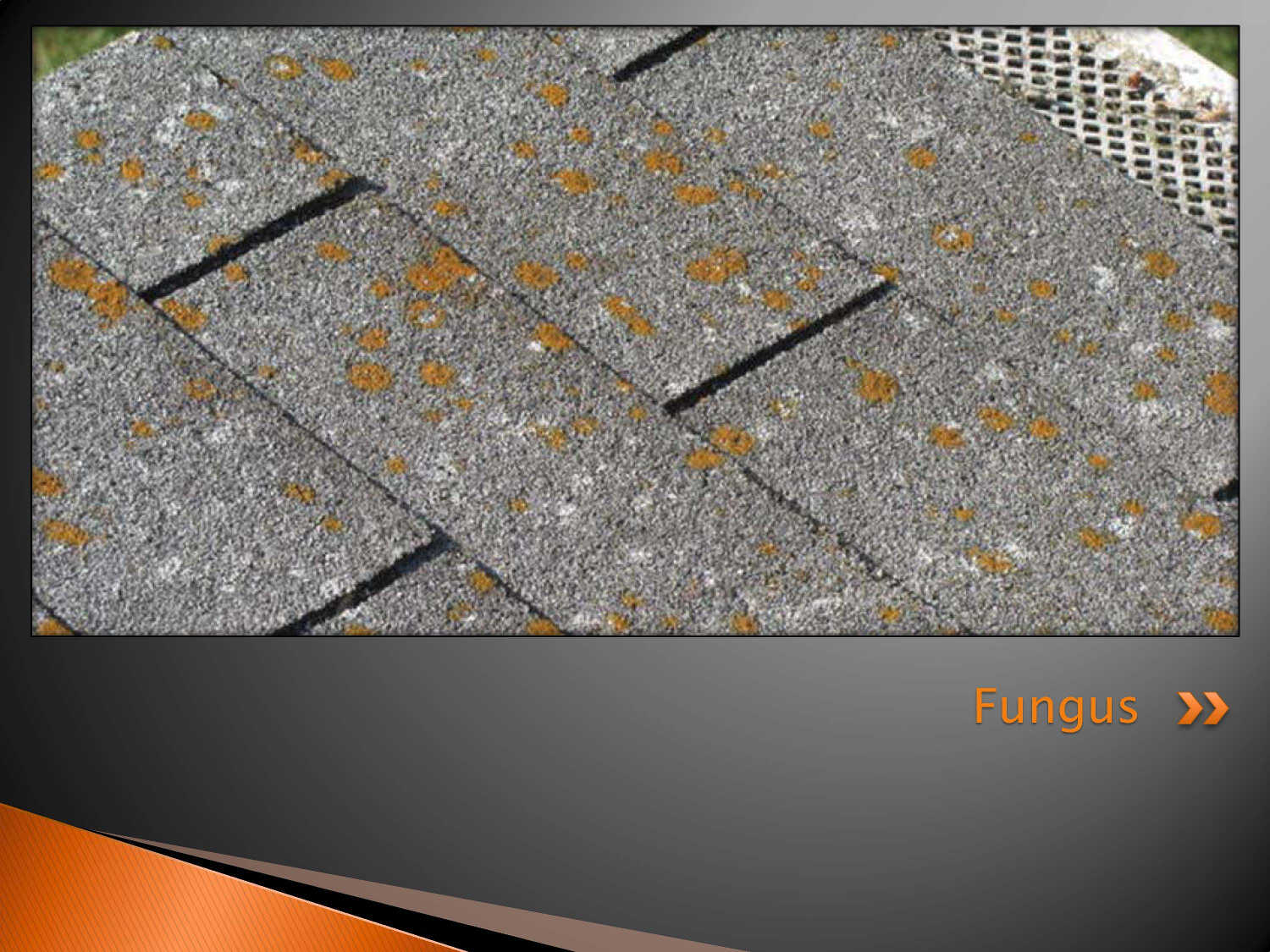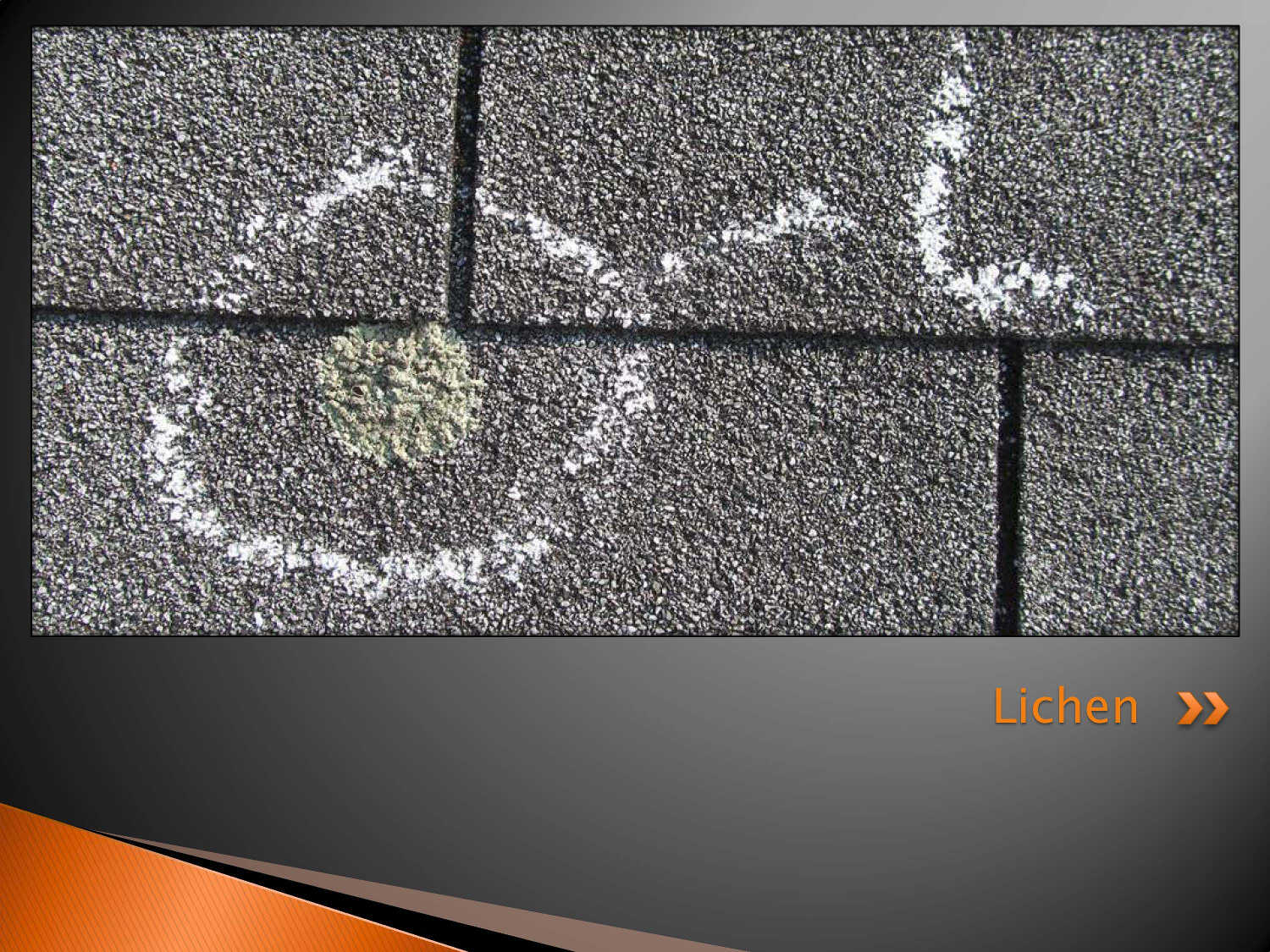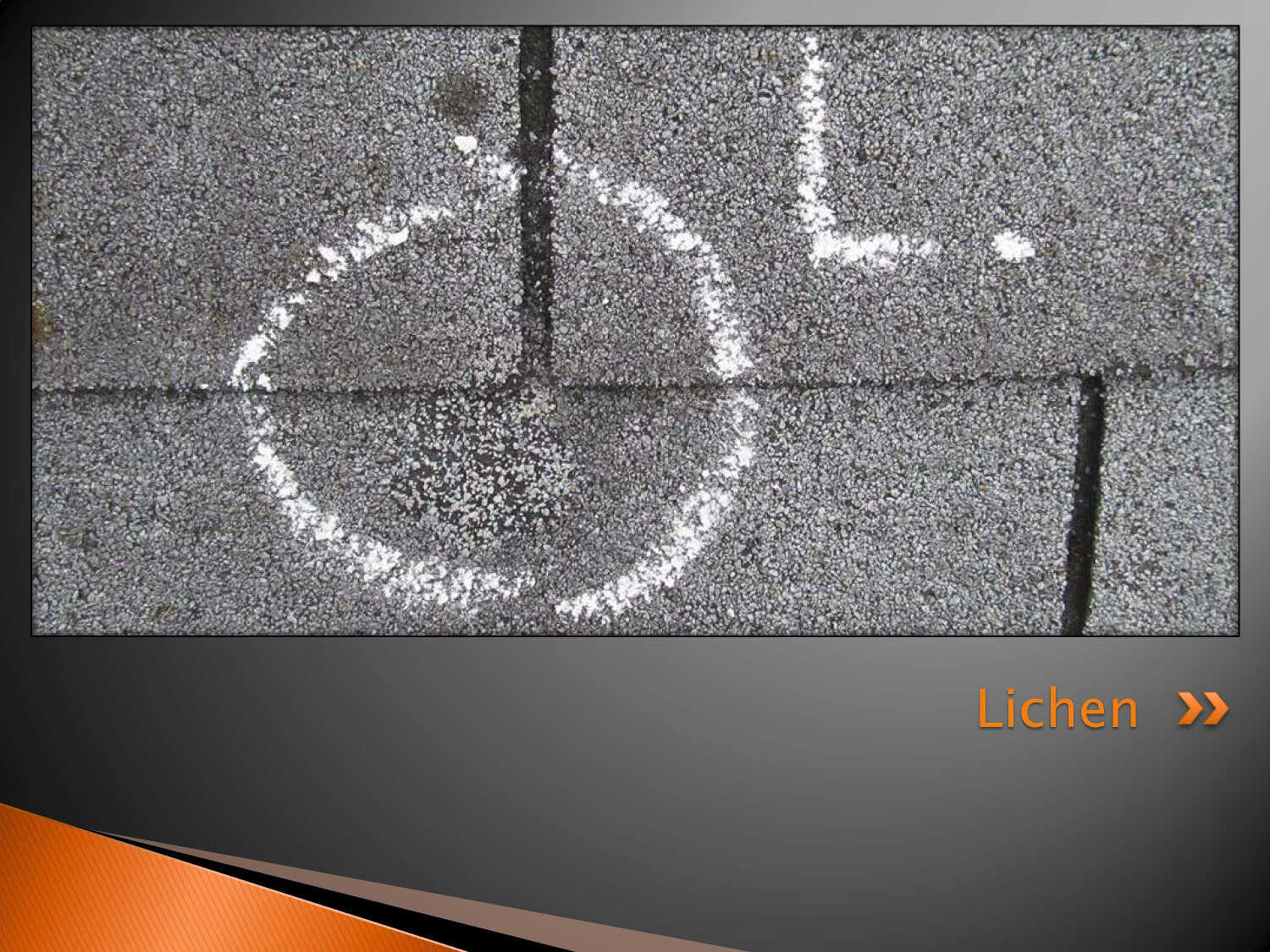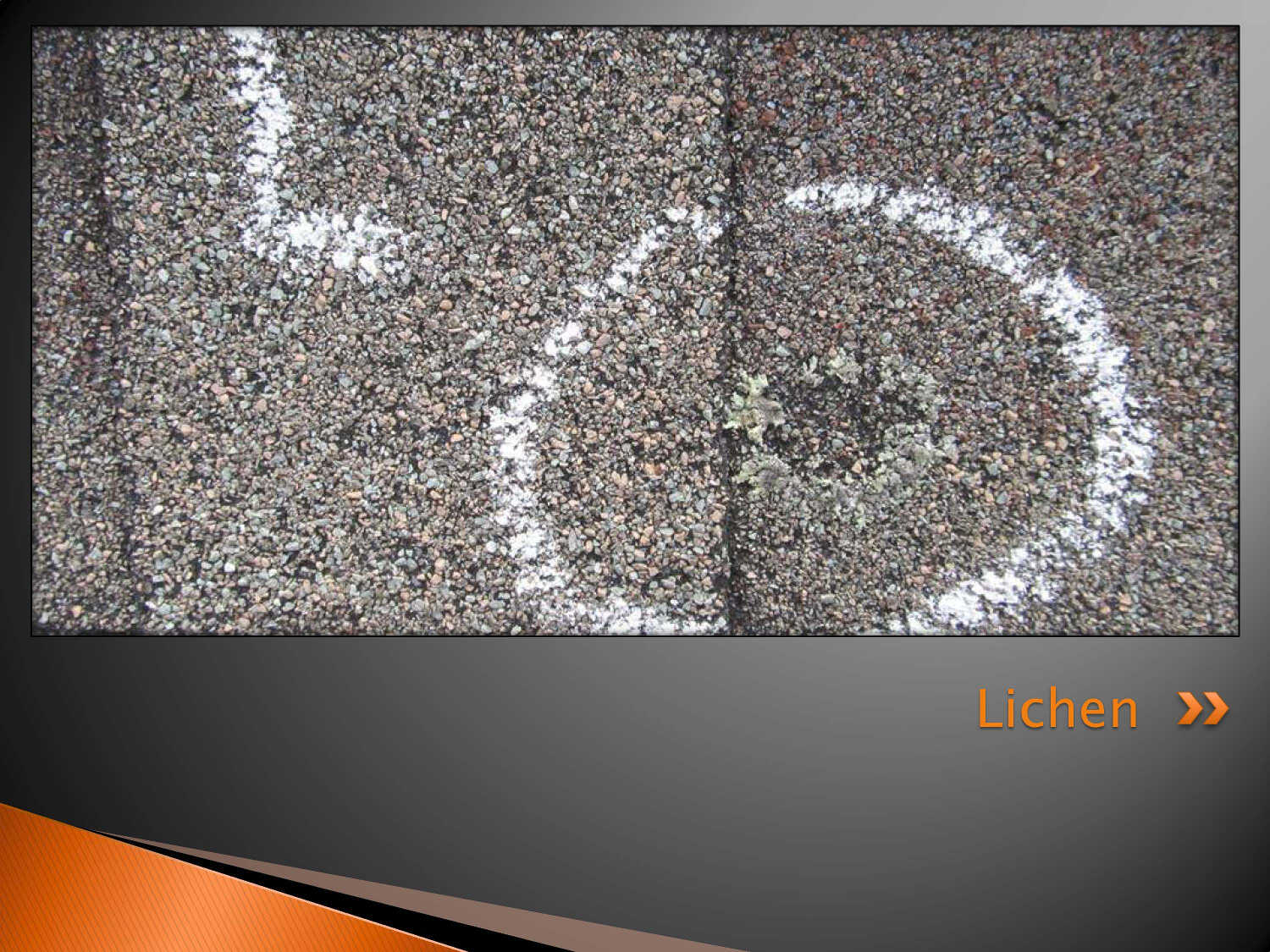What are the effects? Would hail caused “spatter marks” on the algae/fungus constitute hail damage?
The dark staining is algae and fungus infestation. The Lichen is usually in bloom-like shapes and can be colored green or white with small shades of orange. The dark staining on the shingles can be very unsightly and up until now, was believed to have no long term affects to an asphalt roof. Recent studies have shown fungus and lichen may affect the overall performance of an asphalt shingle. The fungus and lichen requires an organic based food source to survive. The asphalt in the shingle provides the nourishment for the fungus and lichen to flourish. The fungus and lichen can grow at a rapid rate, completely covering a roof slope in some cases. Fungus secretes enzymes into the asphalt which begin to digest the material at the base of the granule surface. Granule loss begins and abnormal deterioration begins. Lichen has roots that embed underneath the granules feeding off the asphalt. When the lichen dies, it removes the granules leaving behind a circular pattern of granule loss often mistaken for hail impact marks.
Algae, the more common form of roof staining, require an inorganic substance to feed upon. Shingle manufacturers sometimes incorporate limestone (dolomite) into the manufacturing process, a specific food source for the algae. Since the algae feeds off of the additive and not the asphalt, it is the least destructive of the three infestations.
What about hail impact spatter marks on the algae/fungus? Spatter marks occur when hail stones impact the shingles in an area where fungus and algae exists displaying lighter colored marks on the shingle. The algae and fungus is actually removed directly in the impact area allowing the original color of the shingle to be present which will create a “spotted” pattern on the algae/fungus infestation. This is not a determination of hail impact damage, but simply a determination a hail storm occurred at this particular location. However, spatter marks on shingles is very helpful when inspecting a roof for hail damage as it takes all the guess work out of deciding where the hail stones fell. The size of the hail stones and direction of the storm can also be determined by examining the areas of the spatter marks.

